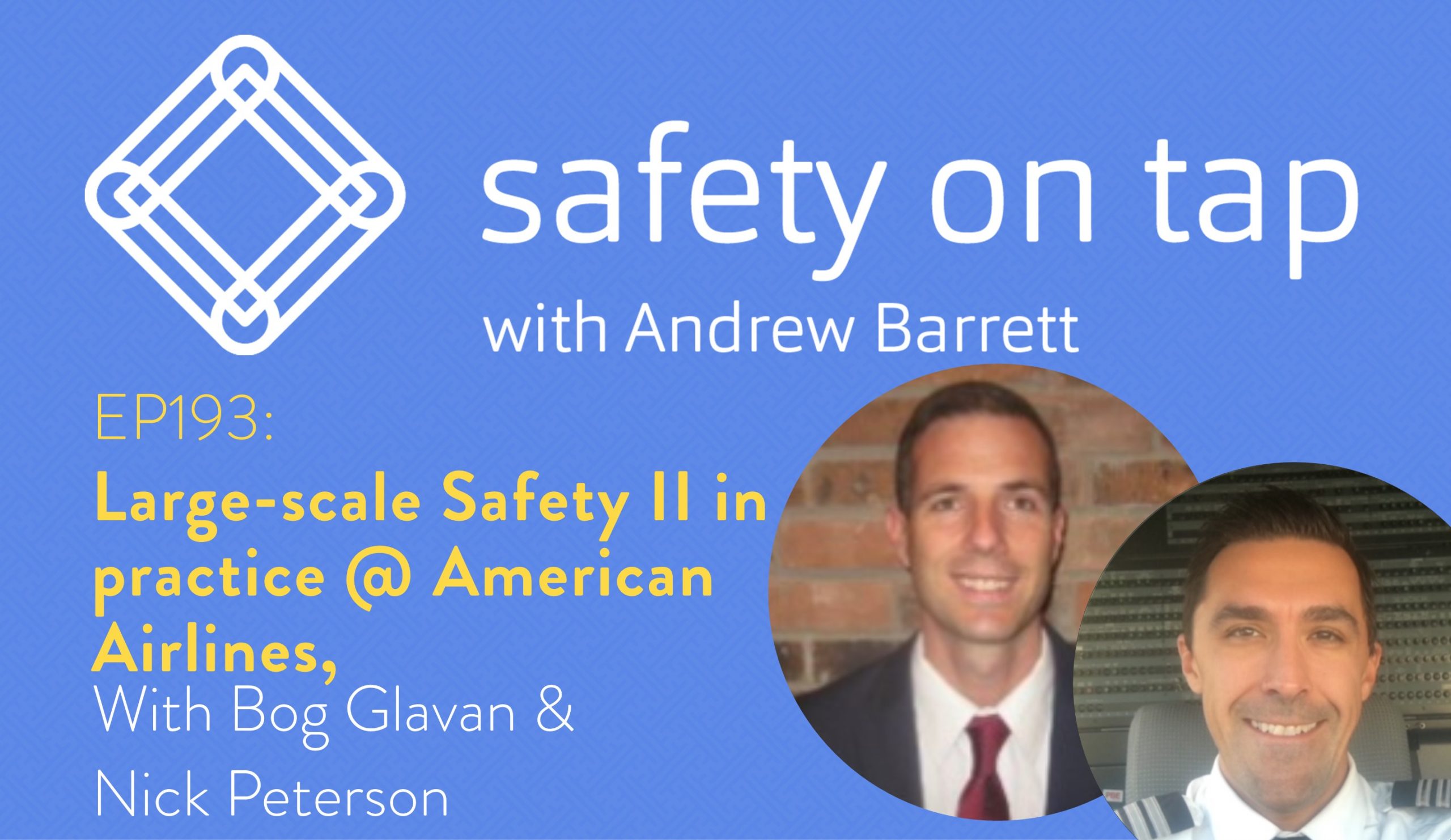There is an enormous amount of talk about new safety approaches, in theory, compared to implementation in practice. But implementation does exist, it does show promise, and it can be done at scale.
Hey, it’s Andrew, and this is Safety on Tap.
Since you’re listening in, you must be a leader wanting to grow yourself and drastically improve health and safety along the way. Welcome to you, you’re in the right place. If this is your first time listening in, thanks for joining us, and well done for trying something different to improve! And of course, welcome back to all of you wonderful regular listeners.
Since you’re listening in, you must be a leader wanting to grow yourself and drastically improve health and safety along the way. Welcome to you, you’re in the right place. If this is your first time listening in, thanks for joining us, and well done for trying something different to improve! And of course, welcome back to all of you wonderful regular listeners.
My guests today are First Officer Bogomir Glavan and First Officer Nicholas Peterson from American Airlines Learning and Improvement Team.
This team is hyper-generous, part of their DNA is to write papers, do presentations, and speak at conferences to share their work, in the hope that it does two things: first that it helps other people, and second that it helps them improve what they are doing through that collaborative process of learning, getting feedback, and reflecting.
This conversation was pretty wide-ranging, we talk about the historical beginnings of this Safety II-informed approach to learning and improvement, and how it both differs from and compliments conventional approaches to safety.
The bottom line is this: these people are doing some of the most advanced operational learning and Safety-II in practice in the world. And just because you don’t work for an airline, doesn’t mean you can’t either.
I’ll talk you through the best way to take these amazing insights into action after the conversation, so stick around for that.
Here’s Bog Glavan and Nick Peterson:
You may need to listen to this one a few times! There was learning gold dripping from the ceiling here at Safety on Tap HQ, and this conversation barely scratched the surface.
The best way for you to make use of this is to both listen to this, carefully and to access some of the papers that the LIT has published over the past few years.
Here are links to a couple of great starter articles:
A short summary of some key insights from LIT
Their Initial White Paper on the LIT
A follow-up White Paper on the Second Phase for LIT
LIT reflections from Bog Glavan returning to flying after Covid
Here are my three takeaways from that chat with Bog Glavan and Nick Peterson.
Takeaway #1: Know what your leaders want, and give it to them. We talked about a particularly data-centric desire at AA, but what this team is doing goes further than this: they satisfied their leader’s curiosity to explore beyond things going wrong, into things going well; they designed something which fits into the organisation and the existing approach, especially critical since this is enshrined in regulation; and they delivered results, they have shown the outputs of their work as useful, their ongoing resourcing as delivering an ROI, and they have now got insights which will be used for revised pilot training. They’re paying attention to what leaders want and giving it to them.
Takeaway #2: This program is anchored in theory. The theory that we can learn much more from things going well, not just things going wrong, and the deeper theory about resilience potentials as articulated by Prof Erik Hollnagel. Evidence-based practice must start with theory, and unfortunately, there is either no theory behind what we do, or we aren’t familiar with that theory so we can neither articulate it, defend it, or adapt it to our context as Bog and Nick have done. If you want to put Safety II into practice, you need to know the theory first. But that aside, as a professional, whatever you are doing today or this week or this year, which bits are theory-strong, and which bits need strengthening, or even questioning?
Takeaway #3: Stay humble about what you don’t know. From the very beginning when they were in hyper-research mode, to engaging expert advisors, to building a program heavily oriented to the participant’s experience, and acknowledging where their data analysis needs to work – these guys stay humble. My personal view is that humility is a critical attribute of successful operational learning, and for solid professional practice. In what aspects of your work are you humble? What aspects could you be more humble?
Thanks so much for listening. Until next time, what’s the one thing you’ll do to take positive, effective, or rewarding action, to grow yourself, and drastically improve health and safety along the way?
Before you go, keep listening for a few words about the work which makes this podcast free for you. Seeya!
You’ve probably heard me talk about learning teams, and might be wondering what’s that all about. Learning teams are an increasingly popular practical activity to help your organisation to learn better, in order to improve performance.
It’s not an investigation, it’s not a risk assessment, and it’s not a committee meeting – but a learning team approach can help to learn from the past, to anticipate the future, and to engage effectively with people all over your organisation or supply chain.
There’s no one way to do learning teams but some critical principles which will enable you to facilitate better learning whatever your situation.
I’ve created a few short videos which explain What is a learning team? If you’re interested visit safetyontap.com/what
Here’s your FREE reflection worksheet from this episode.
And here’s your FREE download of the full transcript of this episode.
Feel free to share this with your team/colleagues!

